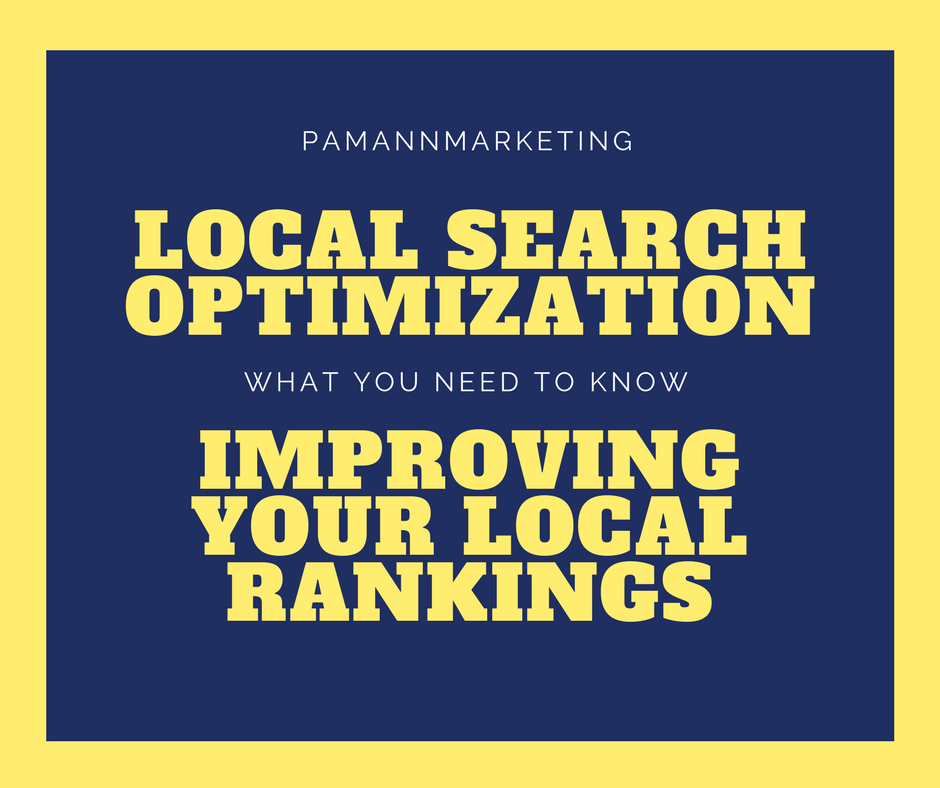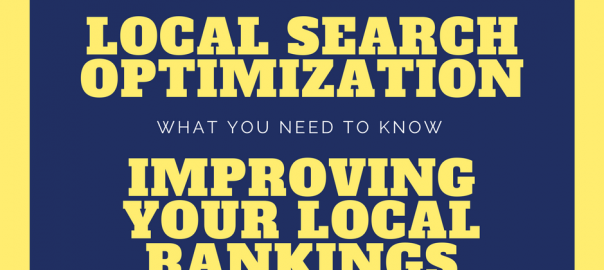— July 28, 2017

When it comes to ranking in local search, there’s a lot a site owner can do to send signals to Google about where their site should be ranked most prominently.
Google’s machine learning algorithms work hard to determine where a business is located in order to rank its website appropriately in local search results. As powerful as they are, Google’s algorithms can only do so much. The rest is up to you.
In this article we will teach you about the signals Google relies on to determine where a site should be ranked in local search. In the end, you can use that knowledge to optimize your site for success.
Let’s get right into it and start putting your business on the map – literally!
International Search Signals
The Two Most Essential International Geotargeting Signals
Google Webmaster Trends Analyst, John Mueller, recently went on record revealing the two most essential signals Google relies on for understanding what country your website should be associated with. When determining in which area of the world a site should be ranked, Google looks toward ccTLD’s and Search Console settings.
What the Heck is a ccTLD?!
What ccTLD stands for is “country code top-level domain.” It’s SEO jargon for saying country-specific domain extension. For example, .ca denotes a Canadian domain, .uk denotes a UK-based domain, .eu denotes a European domain – and so on.
If you want your site to rank in a particular region or country, then having a matching domain extension is sure to help you get there. This may go without saying, but if you’re targeting a US-based audience then ‘.com’ is the most appropriate extension.
Search Console Settings
Your Search Console settings can and should be configured to indicate where you are located. According to Google, this is as important as having the right domain extension. With that said, make sure your domain extension and Search Console settings are in sync. To do so, go to Search Traffic -> International Targeting in Search console.
Other Important Local Search Tactics
Search Console and ccTLDs are key to helping you rank in a particular region of the world – but that only gets you part of the way to where you want to go. Ideally, you’ll want to narrow it down much further by ranking within a specific state, or microtargeting the specific city where you’re located.
There are a number of other local search tactics that can help get you there, and that’s what we’re going to cover in the next section.
On-Page Signals
As a site owner, you have the power to send on-page signals to Googlebot to help it learn what your site is about, which keywords it should rank for, and where your business is located. Here is an overview of several of the most important on-page signals.
Keywords On Page
One of the most effective ways to send on-page ranking signals is through the tactful use of keywords. I say “tactful” because the overuse of keywords could result in a Google penalty. When writing copy for your web pages, reference the name of your location wherever it feels natural. Read the copy out loud to yourself afterward to make sure it doesn’t sound repetitive.
Keywords in Page Titles
We recommend using a content management system, like WordPress, that allows you to customize how your page titles are displayed in search results. Using keywords in page titles is as important as using them throughout your copy.
As an example, if you’re located in NYC, then append “in NYC” to your page titles. For someone that runs a barbershop, some possible page titles could include:
- Best Barbershop in NYC
- Razor Fades in NYC
- Hot Shaves in NYC
- Beard Trimming in NYC
You must get the idea by now. Again, don’t overdo it. Limit your use of location-based keywords to one per page title. Keyword stuffing in page titles is a sure way to damage your rankings.
Keyword in Domain Name
Using keywords in the domain name itself is also known to assist with ranking for a desired keyword – in this case, the keyword would be the name of your location. We realize that may not always be possible, especially if you have an existing domain, or targeting multiple locations.
If you’re starting a new site and registering a new domain, using your location in your domain name is certainly a consideration worth making. We by no means recommend moving an existing site to a new, keyword optimized domain. A domain’s age is a ranking signal in and of itself, so you don’t want to lose that.
Location Pages
In addition to peppering the name of your location throughout your site’s copy, you can send an even stronger signal by dedicating entire pages to highlighting your location. It’s recommended that you have at least one page on your site where the full address of your location is written out in full. A “Contact Us” page is an ideal place on your site to list this information.
If your business has multiple locations, then it’s even better for your site to have a unique page for each unique address. This not only helps Googlebot understand how to rank your site in local search, it improves the overall user experience.
As a further benefit to your local search ranking, and user experience, you should embed a Google Maps snippet into your location pages. One last thing to knock off your checklist is to mark up both your address, and Google Maps snippet, with the appropriate Schema.org structured data. You can learn more about that at Schema.org.
Off-Page Signals
Information contained in your site itself will send one set of signals. Off-page information about your business also helps Googlebot gain a better understanding of where to rank your site locally. Here is an overview of some of the most important off-page signals.
Google My Business & Google Maps
Having a verified listing on Google Maps will help identify the exact coordinates of your business location. With proximity to a searcher being among the top ranking signals, the more precisely Google can narrow down your location the better. This will also allow you to embed a Google Maps snippet as mentioned previously.
Technically speaking, anyone can add a Maps listing for any business – but only the owner can create a verified listing. Having a verified listing means more to your local search ranking than a generic listing.
Getting a verified listing on Google Maps can be accomplished by signing up to Google My Business and filling out the required information. Not only will this get you on Maps, it will allow Google to display a Knowledge Graph card when the name of your business is searched for. You can learn more about that in our guide to Google My Business.
Local Business Directories
You may have heard directories have fallen out of favor in SEO as of late, which is due in large part to spammers abusing directory listings to manipulate their search results. However, when it comes to local search, there are many directories that are still relevant and credible.
Some of the directories that are still worth being featured on as a local business include:
- Facebook Business Pages
- Yelp
- Yext
- Angie’s List
- Trip Advisor
- YP.com
- EZ Local
- SuperPages.com
- and many others
We cannot stress enough how important it is to have your business name, address, and phone number (NAP) consistent across all of the credible directories. This also includes Google Maps and Google My Business. However, your NAP data appears on Google Maps (Google My Business) is how it should also be formatted on your website and other listing sites.
Inconsistencies in your NAP will confuse Googlebot, which may negatively affect your local rankings. It’s a good practice to keep a record of the directories where your business is listed. If your phone number or address needs to be changed on your website, you will then know everywhere else where the information needs to be updated.
Local Reviews
Embrace and encourage local reviews, because both the quality and quantity of reviews for your business can be an asset to your local search rankings. Google reviews are arguably the most important as they are the most visible, but reviews within other local listing sites can help as well.
What’s the best way to get a customer to leave a review? Ask them! When businesses are concerned that they’re not getting as many reviews as their competitors, our first question is: “Do you ask for them?” Often times the answer is “no.”
Well, that’s the problem right there. Here’s a great pitch you can steal from us:
“We appreciate your business! Please consider leaving a five star review. If you feel we did not earn five stars, contact us directly to let us know what we can do to better meet your expectations.”
That will accomplish three things. It encourages a review, it encourages a five-star review, and it discourages negative reviews by giving you one final opportunity to leave the customer happy (and have them communicate that to you directly instead of through a negative review).
Behavioral Signals
Signals based on user behavior are said to influence search rankings to a certain extent. This includes clicks from search results, clicks to call, mobile check-ins, and other such signals. These can be optimized for to a degree by writing compelling page titles and including calls-to-actions in your meta descriptions.
Customer-facing businesses can encourage check-ins while customers are inside the establishment. A common practice is to have a sign somewhere which invites customers to check-in, or perhaps even offering a slight discount for those who check-in.
Local Backlinks
As we like to say in the SEO industry – inbound links, also known as backlinks, are the currency of the internet. Since the dawn of search engines, inbound links have been used as a way to measure how well a page deserves to rank in search results.
Many still consider links to be the single greatest asset to a site’s Google search rankings. As with most things in SEO, you have to tread lightly when building backlinks. They could also result in a Google penalty if they’re misused. Building a large quantity of low quality, irrelevant backlinks is highly discouraged.
As a local business, you should focus on building inbound links from high authority sources which also send local search ranking signals to Google. Here are just a few of many examples to consider.
- Chamber of Commerce: When joining your local Chamber of Commerce, you will likely get a dedicated listing on their site with a link back to yours.
- Event Sponsorship: Sponsoring a local event will usually come with the benefit of being linked to by the event’s website, Facebook page, and so on.
- Business Partnerships: If you work together with other local businesses, it’s worth your while to reach out and request a link wherever you feel it may fit on their site.
- Guest Posting: If you feel you have something of value to contribute to the blog of another local business, reach out and pitch your idea. If accepted, this is another opportunity to earn an inbound link.
- Local News Sites: Hyperlocal news sites like your town’s Patch are often starving for content on what’s happening in your area. If you have something genuinely newsworthy going on in your company, write a press release and submit it to hyperlocal news sites.
Get creative when it comes to link building. Start a habit of looking for link opportunities at every turn. Remember, like reviews, it never hurts to ask for a link if you believe it’s deserved, such as when you are sponsoring an event or local sports team.
Wrapping it Up
Ranking in local search starts with having the right domain extension and configuring your Search Console settings accordingly. It continues with on-page and off-page optimization, which consists of:
- Keywords in page content
- Keywords in page titles
- Keywords in the domain name
- Location pages
- Google My Business & Google Maps
- Local directories
- Local reviews
- Behavioral signals, and
- Local backlinks
With this information in hand, you’re now armed with the knowledge you need to optimize your site for success in local search. If you have a great local search tip that we may have missed throughout this article, please add it in the comments section below.
Digital & Social Articles on Business 2 Community
(85)





